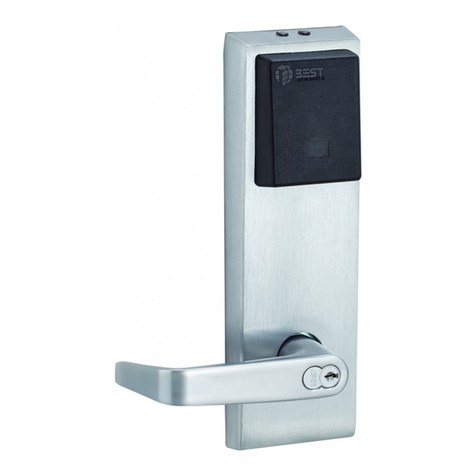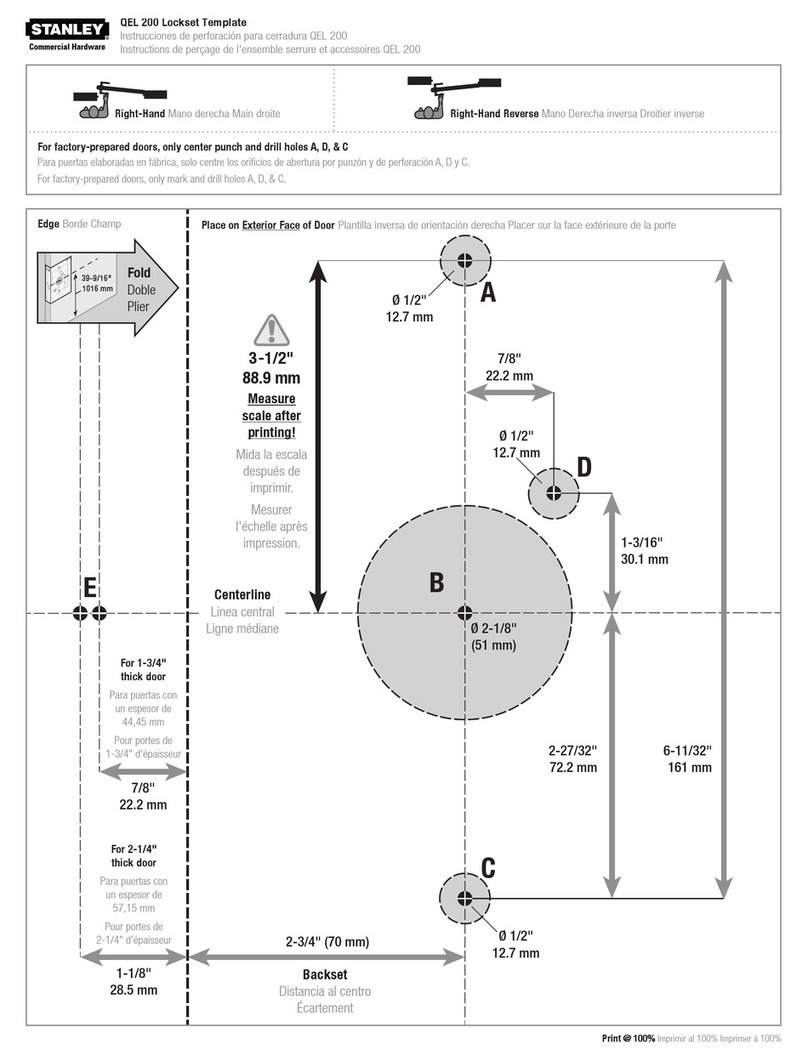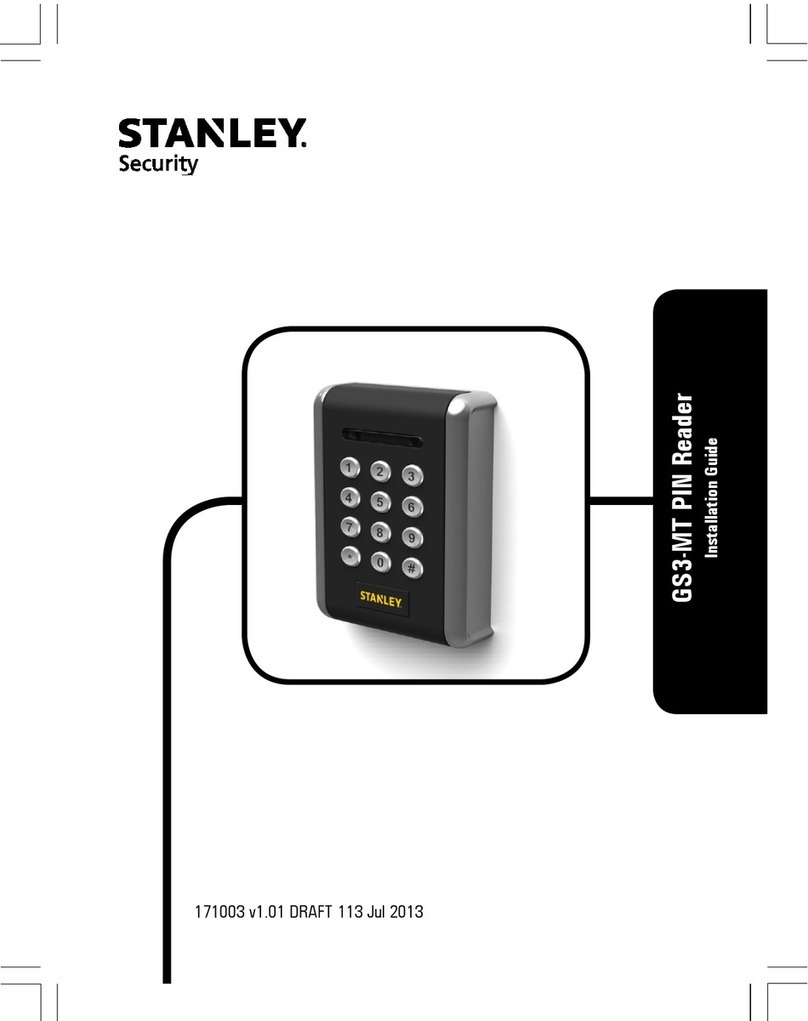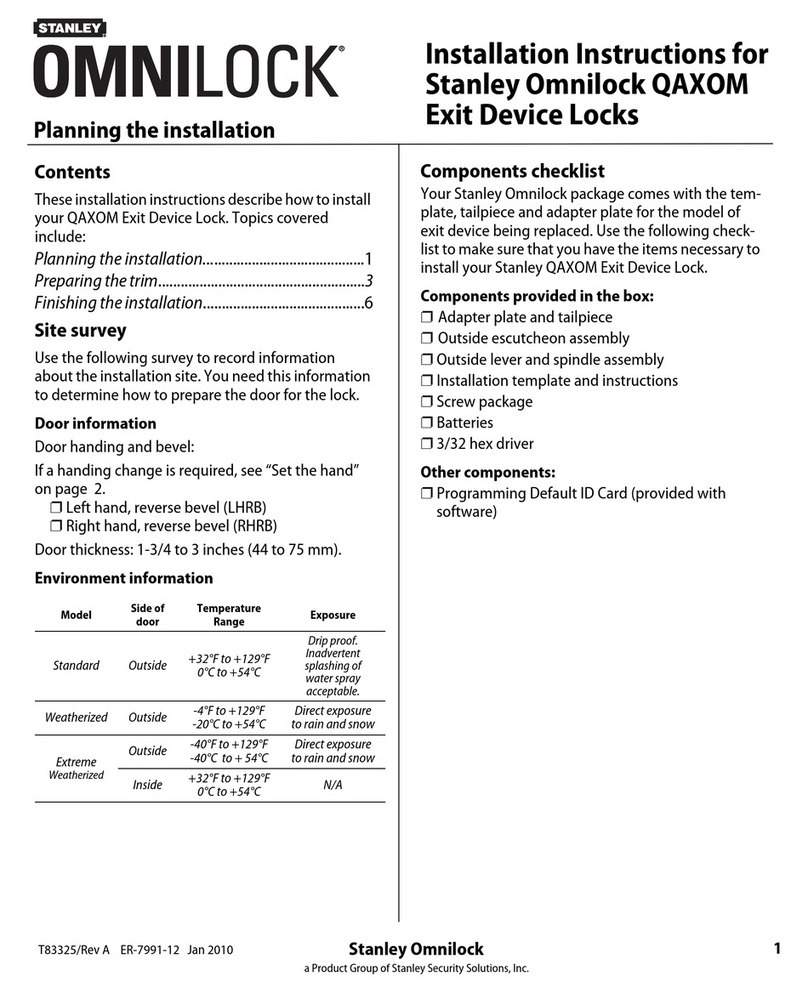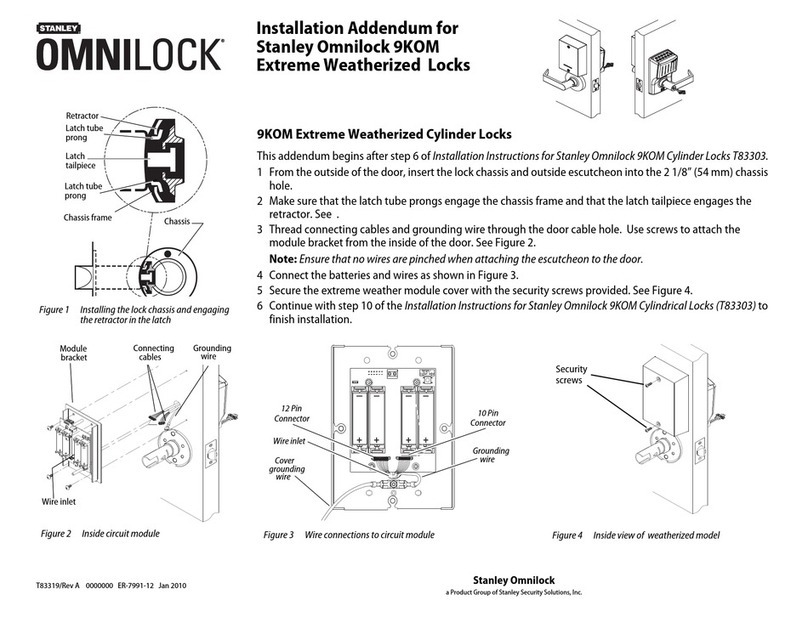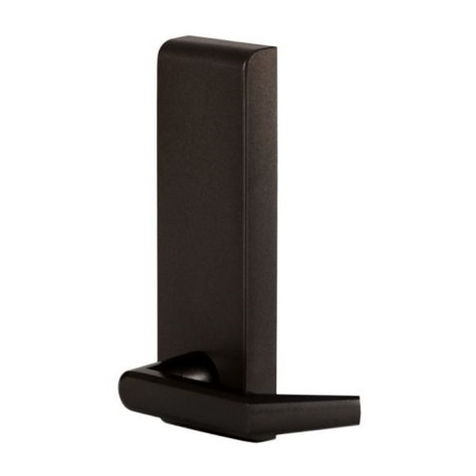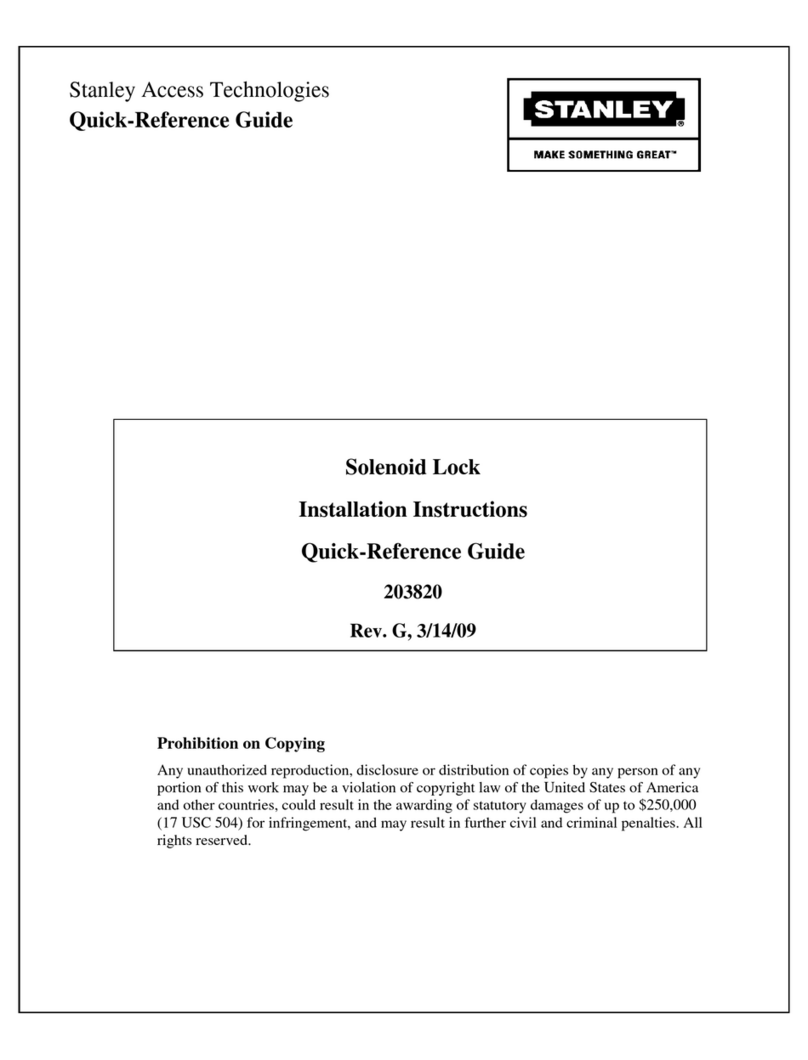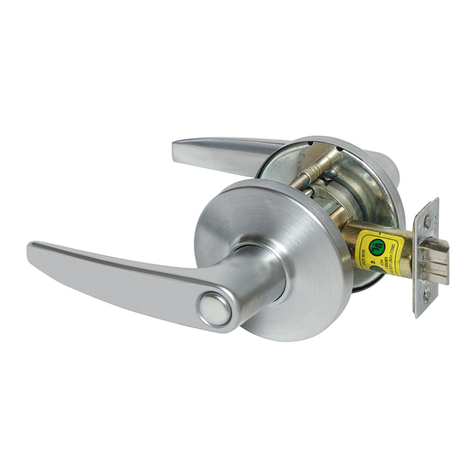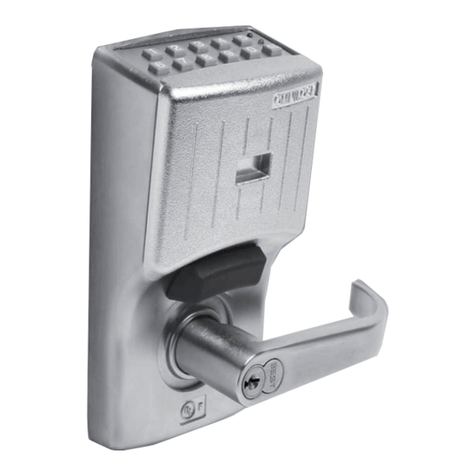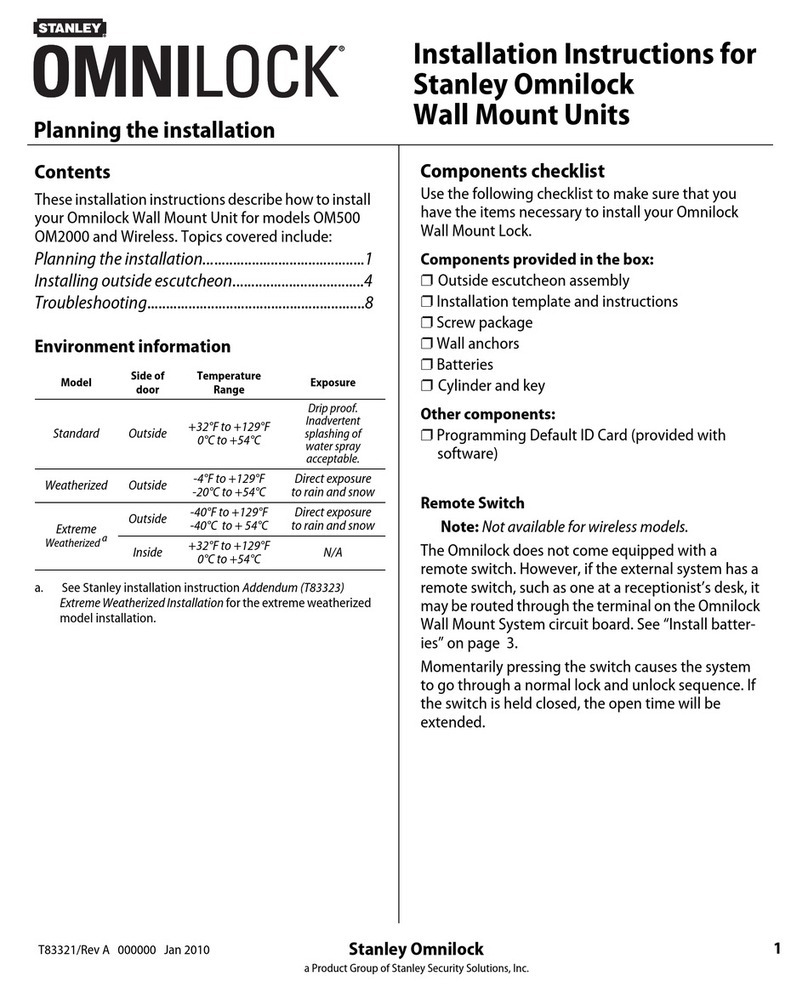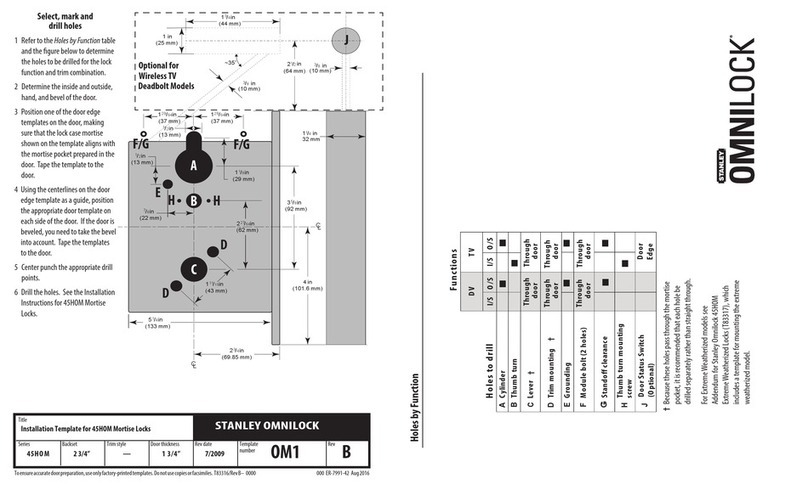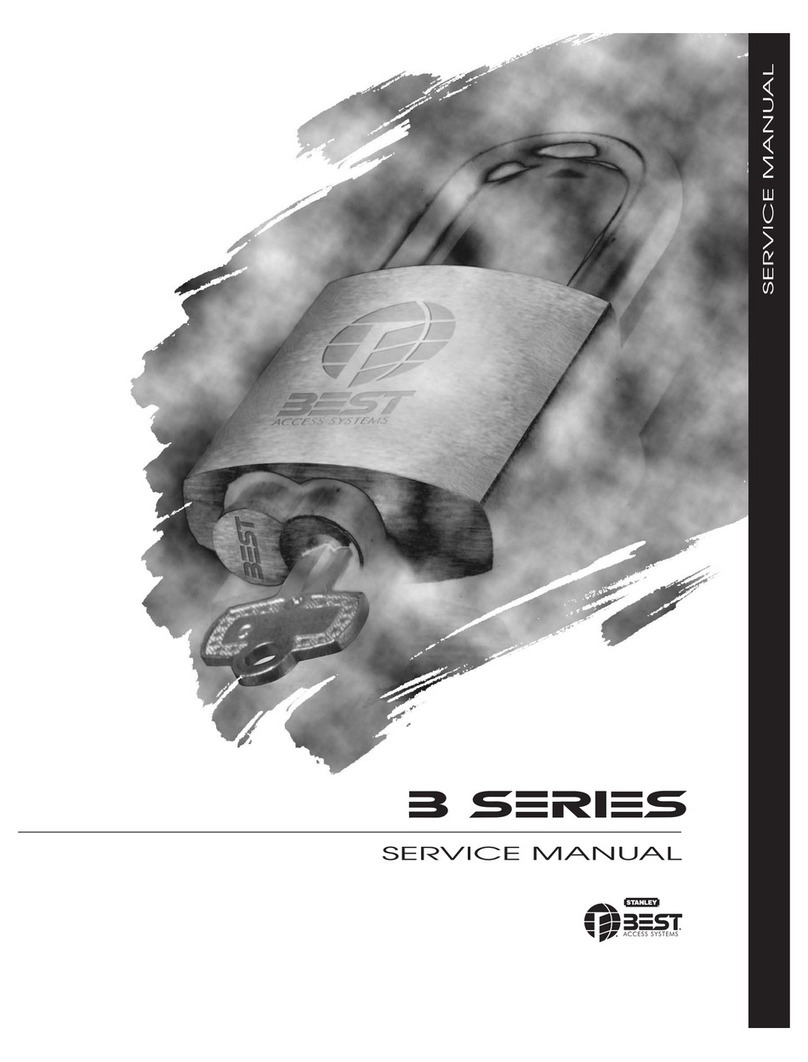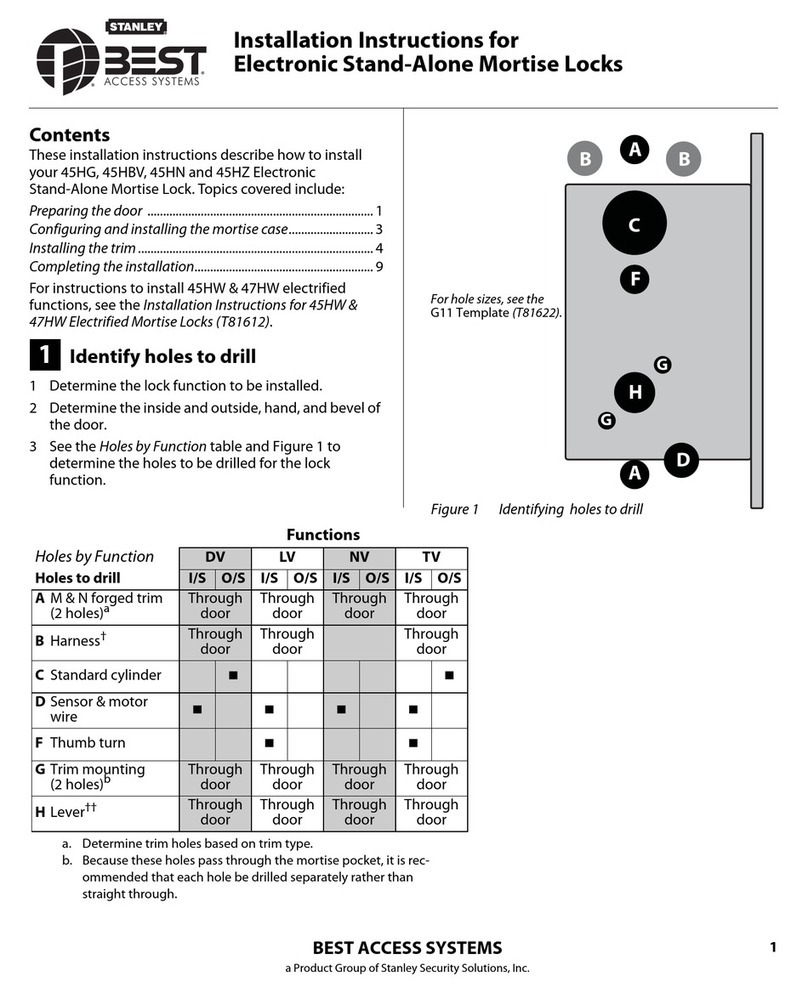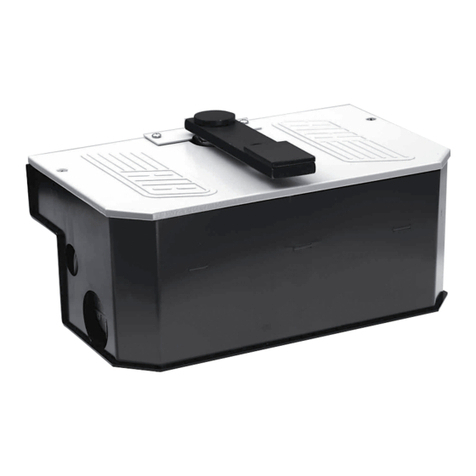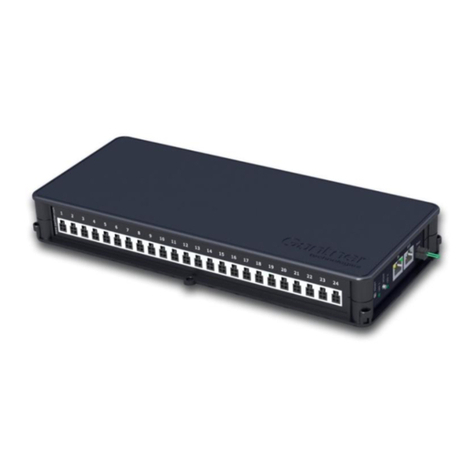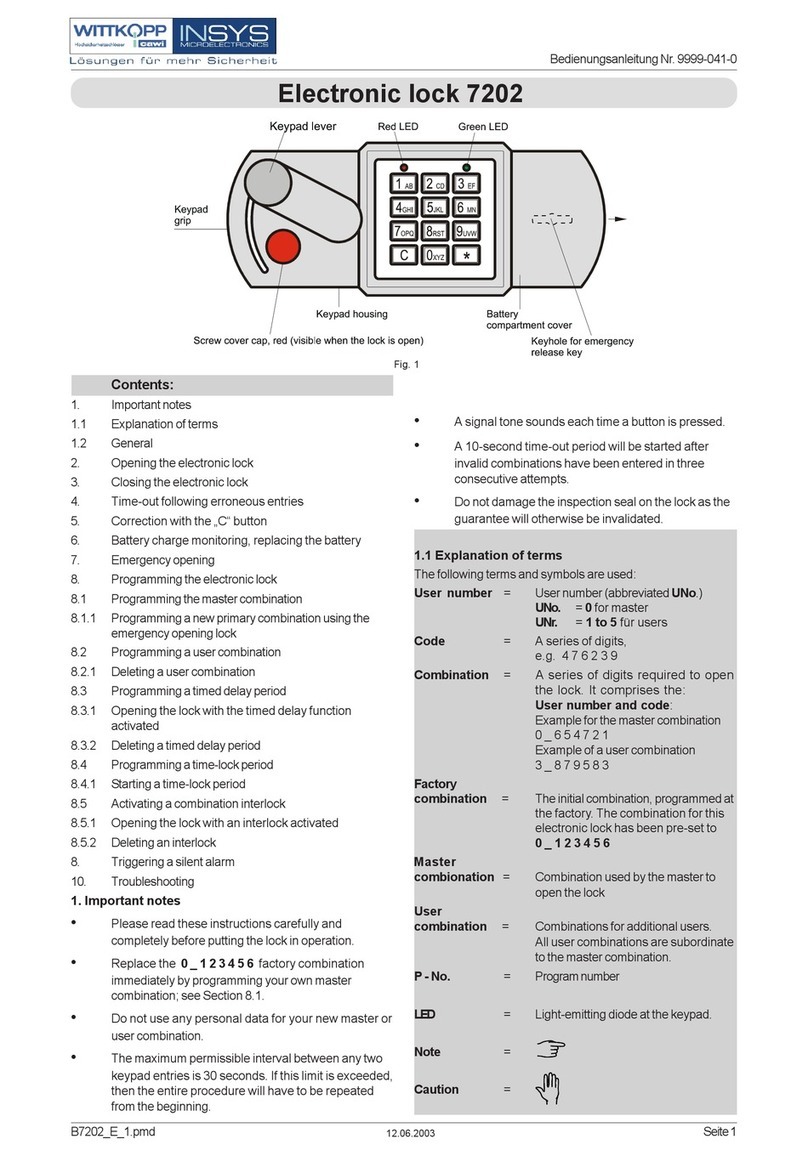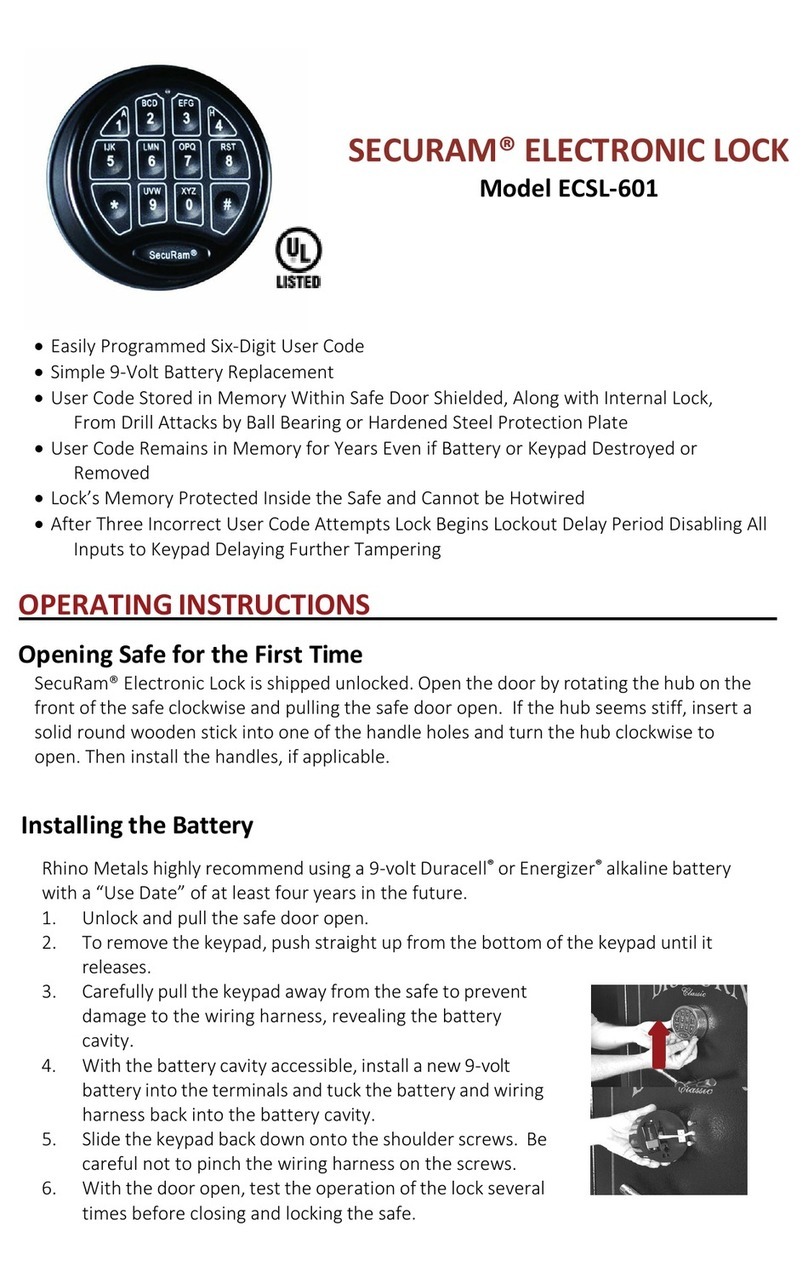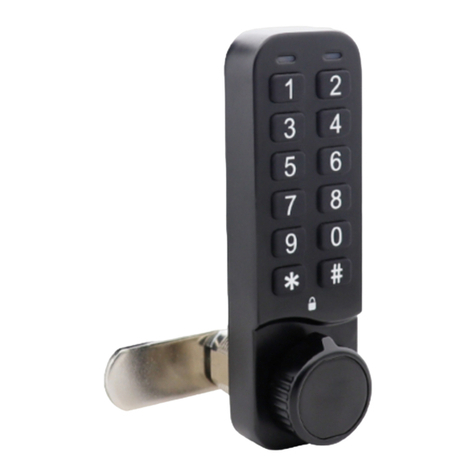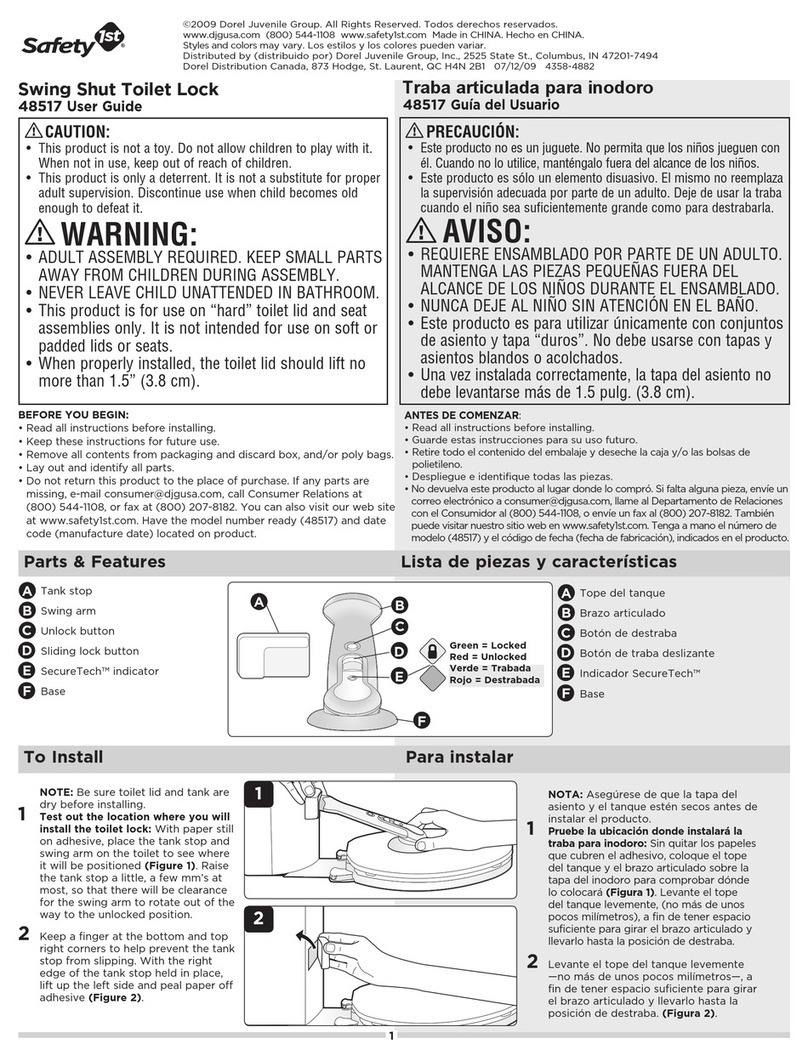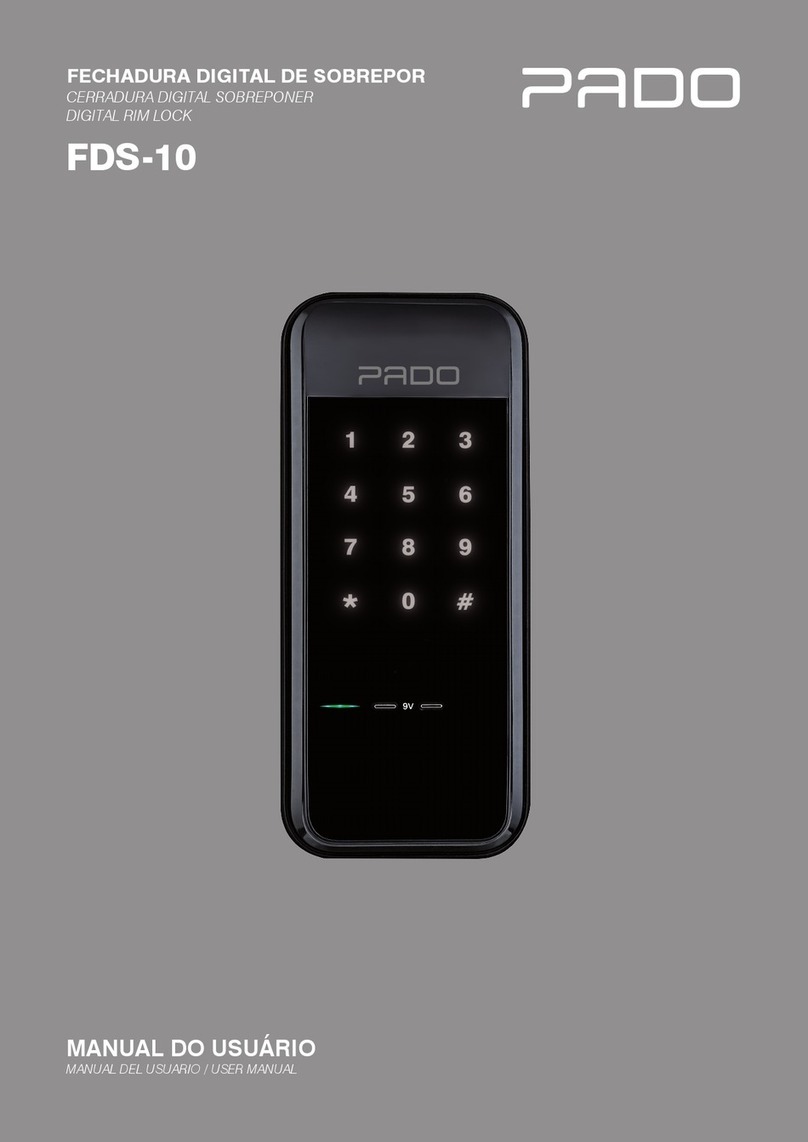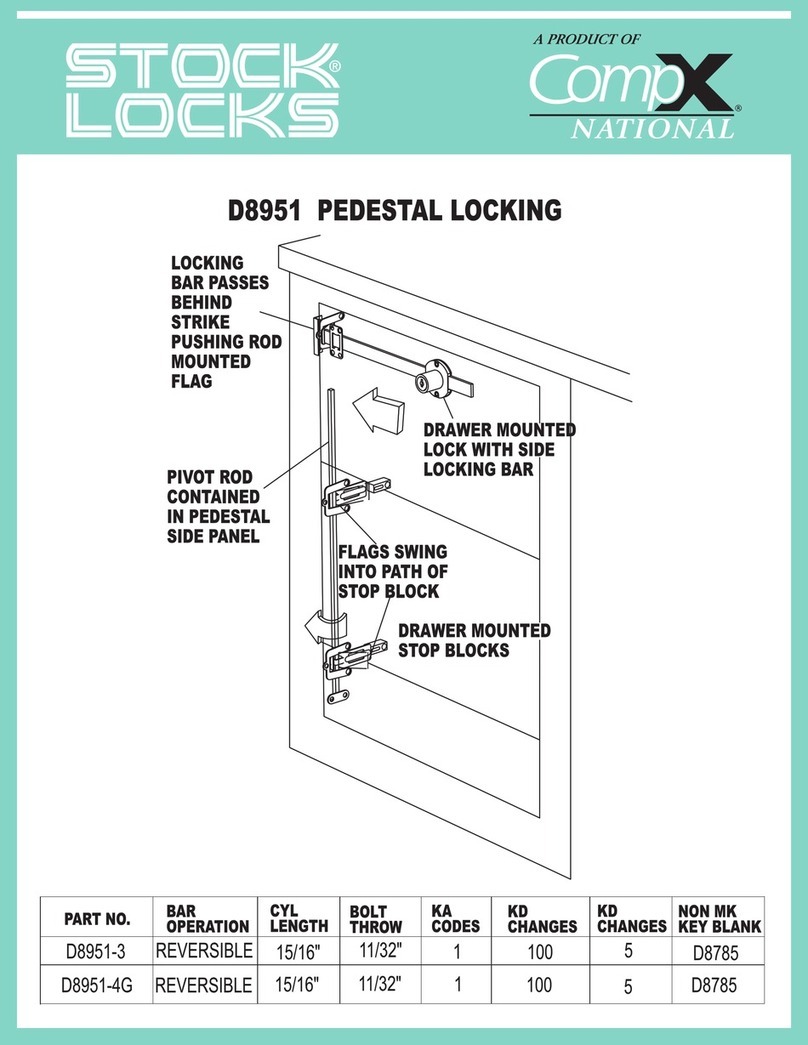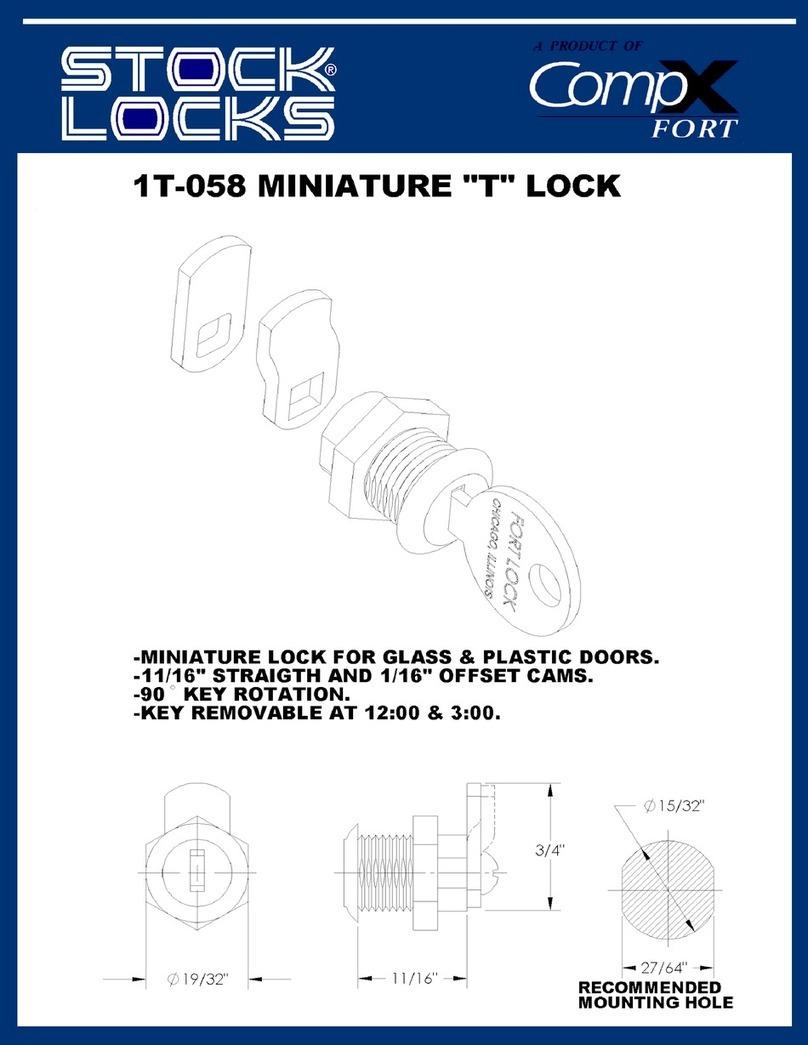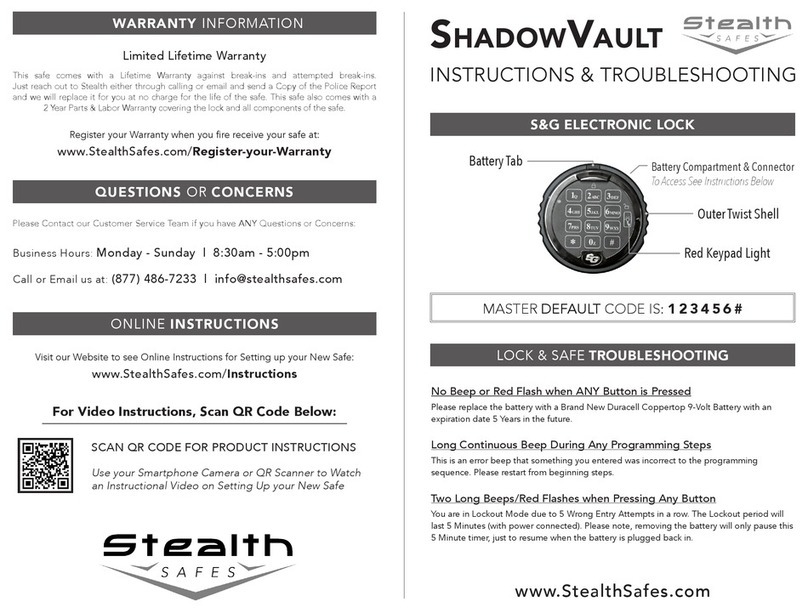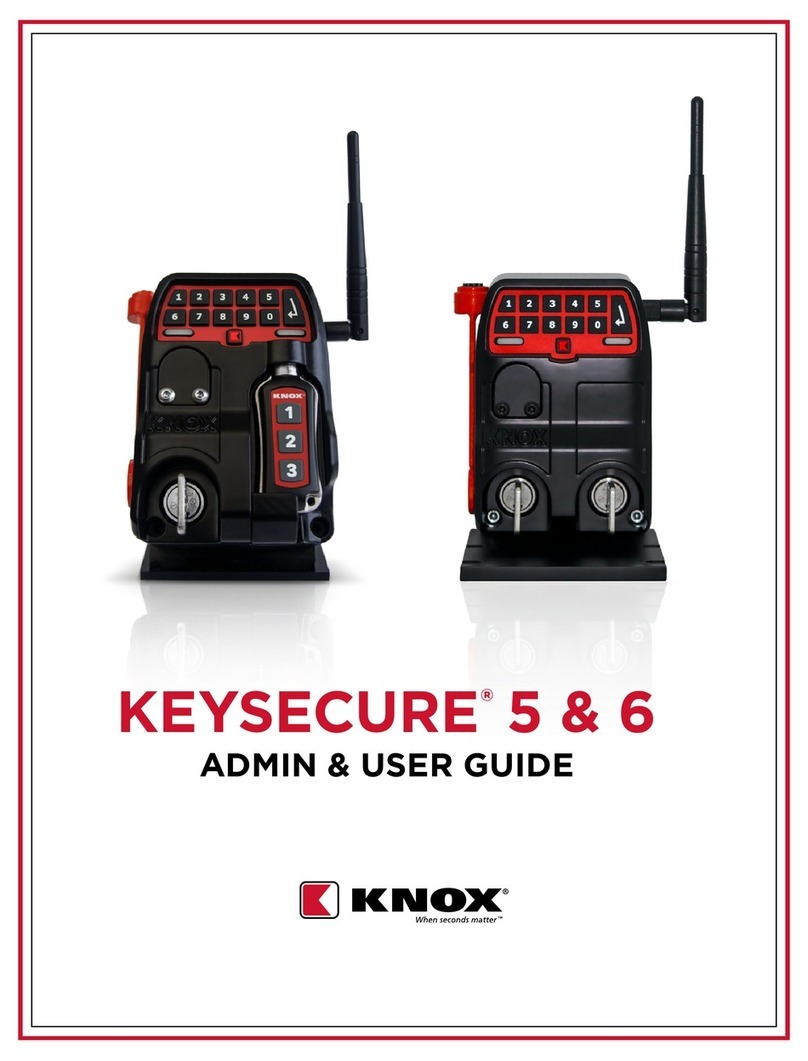
4
© Copyright 2006, Sargent & Greenleaf, Inc.
CHECK THE NEW COMBINATION:
Uncover the opening index and check your new combination by
following these instructions, which are identical to those under
“TO OPEN.”
1. Turn the dial left until the first number of the new combina-
tion aligns with the opening index the fourth time.
2. Turn the dial right until the second number of the new com-
bination aligns with the opening index the third time.
3. Turn the dial left until the third number of the new combina-
tion aligns with the opening index the second time.
4. Turn the dial right. It should come to a positive stop in
less than one revolution. If the dial does not stop, carefully
repeat the entire opening procedure at least two more times
before either calling a qualified safe technician or referring
to the “…in case of trouble” section.
5. A combination change should be considered successful only
when the new combination is successfully tried at least three
times. Only then is it wise to close and lock the safe door.
…in case of trouble
Anyone can make mistakes and “lose” a lock’s combination in
the process of changing to a new set of numbers. This section
will detail two steps you can take on your own to manually pre-
pare the lock for a second attempt to enter a new combination.
If you still cannot set a combination into the lock by following
these procedures, call a reputable safe technician to correct
the problem and service the lock. DO NOT CLOSE THE SAFE
DOOR BEFORE THIS SERVICE IS PERFORMED.
PROCEDURE #1:
If the lock will not open when the new combination is dialed
to the opening index, cover the opening index and dial the new
numbers to the changing index. For example:
1. Turn the dial left until the first new number aligns with the
changing index the fourth time.
2. Turn the dial right until the second new number aligns with
the changing index the third time.
3. Turn the dial left until the third new number aligns with the
changing index the second time.
Once this is done, attempt to re-insert the changing tool into
the lock. Although it’s acceptable to wiggle the tool slightly,
do not force it. If the key will enter the mechanism to the point
where the wing is entirely inside the lock case, you may turn
the changing tool approximately 90º counterclockwise and proceed
with the steps listed under “ENTER THE NEW COMBINATION.”
PROCEDURE #2:
These steps should only be taken after unsuccessfully trying
Procedure #1 and inspecting the area of the lock for attach-
ments to the lock case. If any part of the safe is attached to
or bears against any part of the lock’s cover, refer servicing
to a qualified technician and do NOT proceed.
1. Remove the two 8-32 machine screws from the cover and
carefully lift the cover from the lock. Place the screws and
cover aside. Refer to Figure 5 for steps 2, 3, and 4.
2. Use a blunt probe (screwdriver, unsharpened pencil, etc.)
in the opening in the outer edge (gate) of the top wheel to
rotate this wheel until it aligns with the gate in the edge
of the wheel below the top wheel. See Figure 5 to help iden-
tify features.
3. With the probe in the gates of both wheels, move them
together to align the two gates with the gate in the bottom
wheel. Now you will be moving all three wheels together.
4. Move all wheels counterclockwise (as viewed from the inside
of the lock) until the probe catches in the hook of the lever
nose. At this point, carefully remove the probe, being very
careful to maintain all three wheels in alignment.
5. Replace the cover on the lock and attach it with the two
machine screws.
6. You should now be able to insert the changing tool, although
it will probably be necessary to wiggle it more than usual.
Do not force the changing tool. Once it is inserted to this
point where the wing is entirely inside the lock, turn the
changing tool approximately 90º counterclockwise and proceed
with the instructions under “ENTER THE NEW COMBINATION.”
WARNING : DO NOT REMOVE ANY INTERNAL LOCK PARTS.
THIS IS A PRECISION MECHANISM WHICH SHOULD ONLY BE
SERVICED BY A QUALIFIED SAFE TECHNICIAN.
Model 6730, 6735, 6738, 6741 Mechanical Combination Lock
Operating/Changing Instructions
Figure 5
